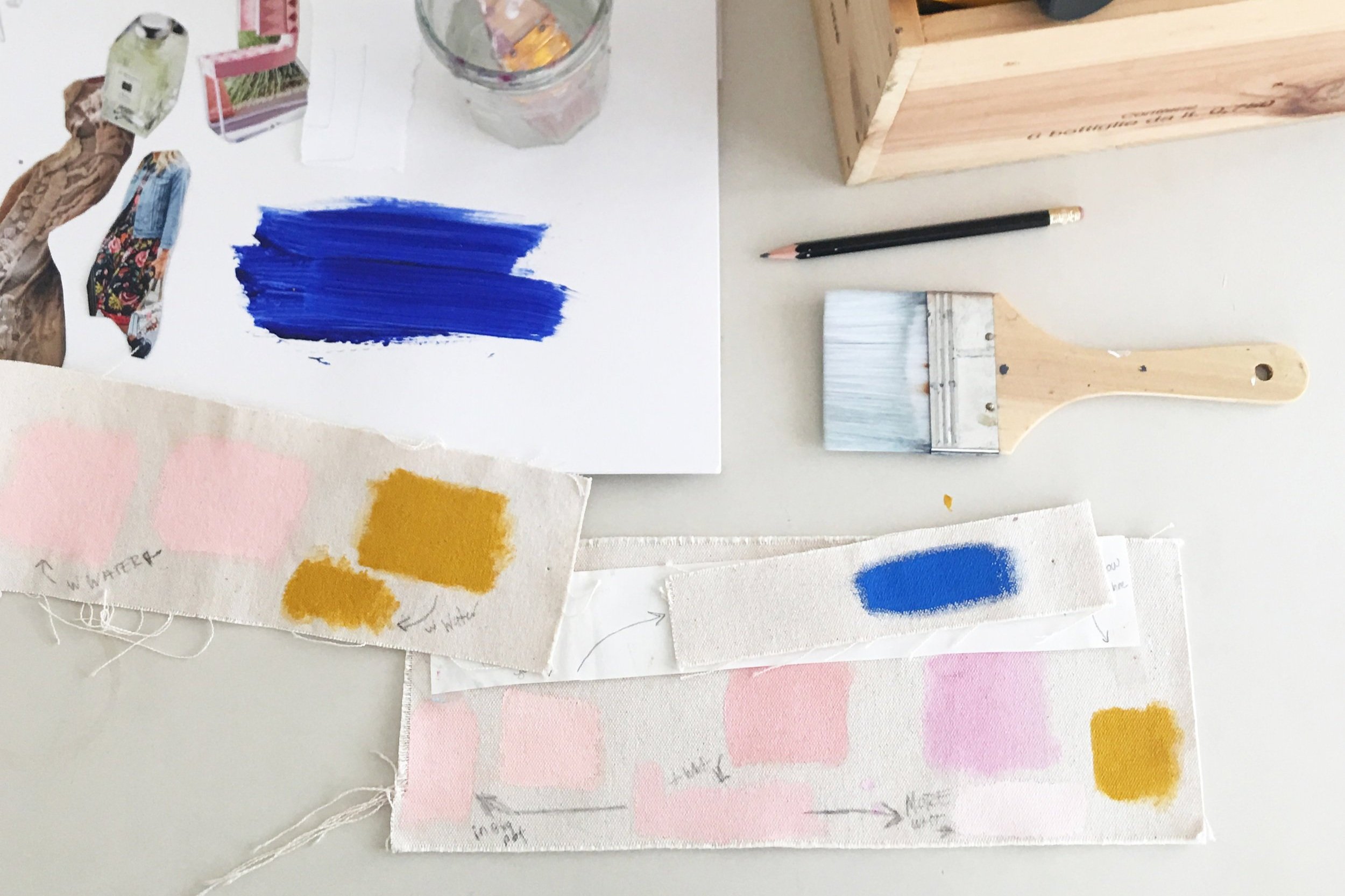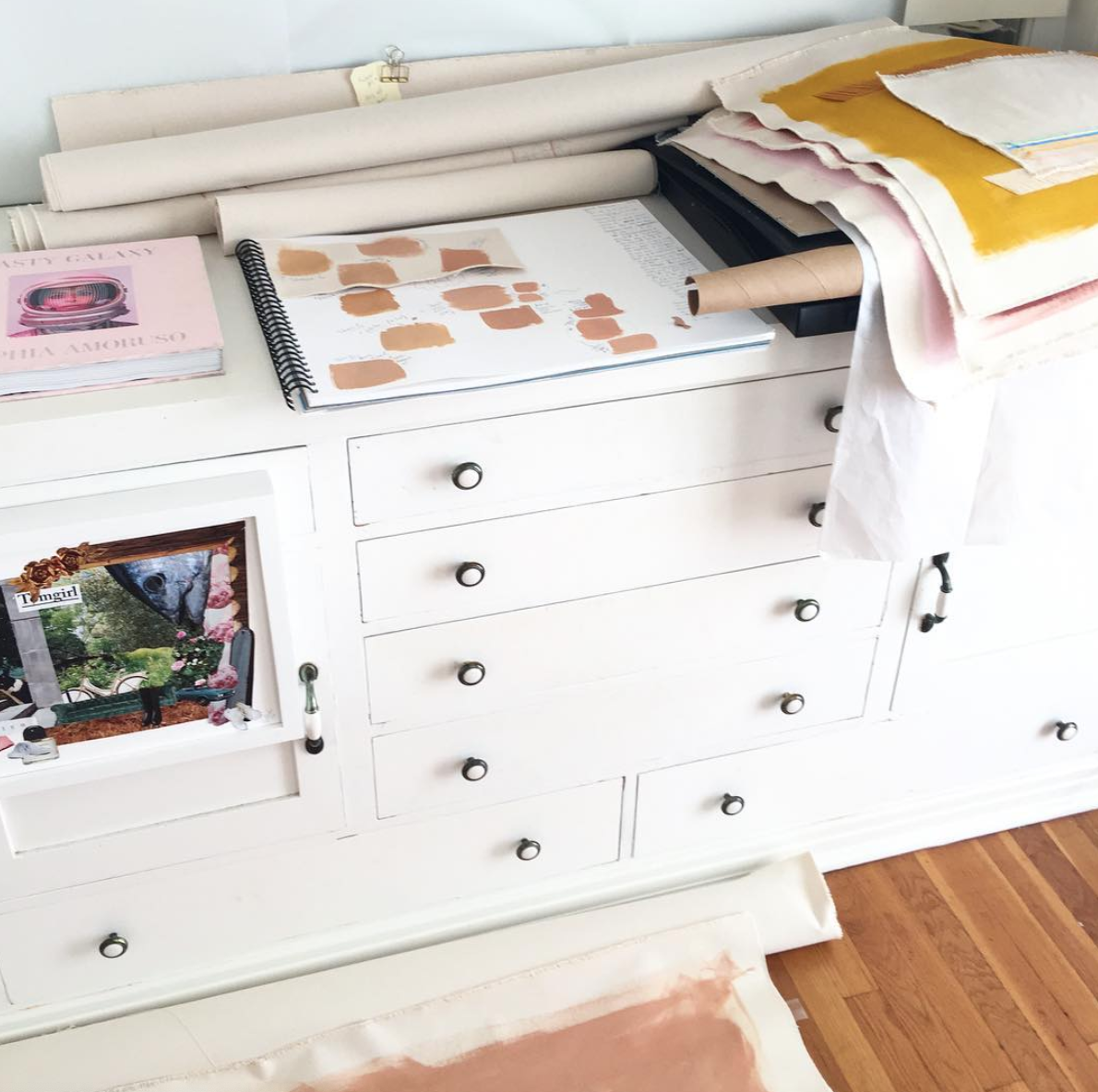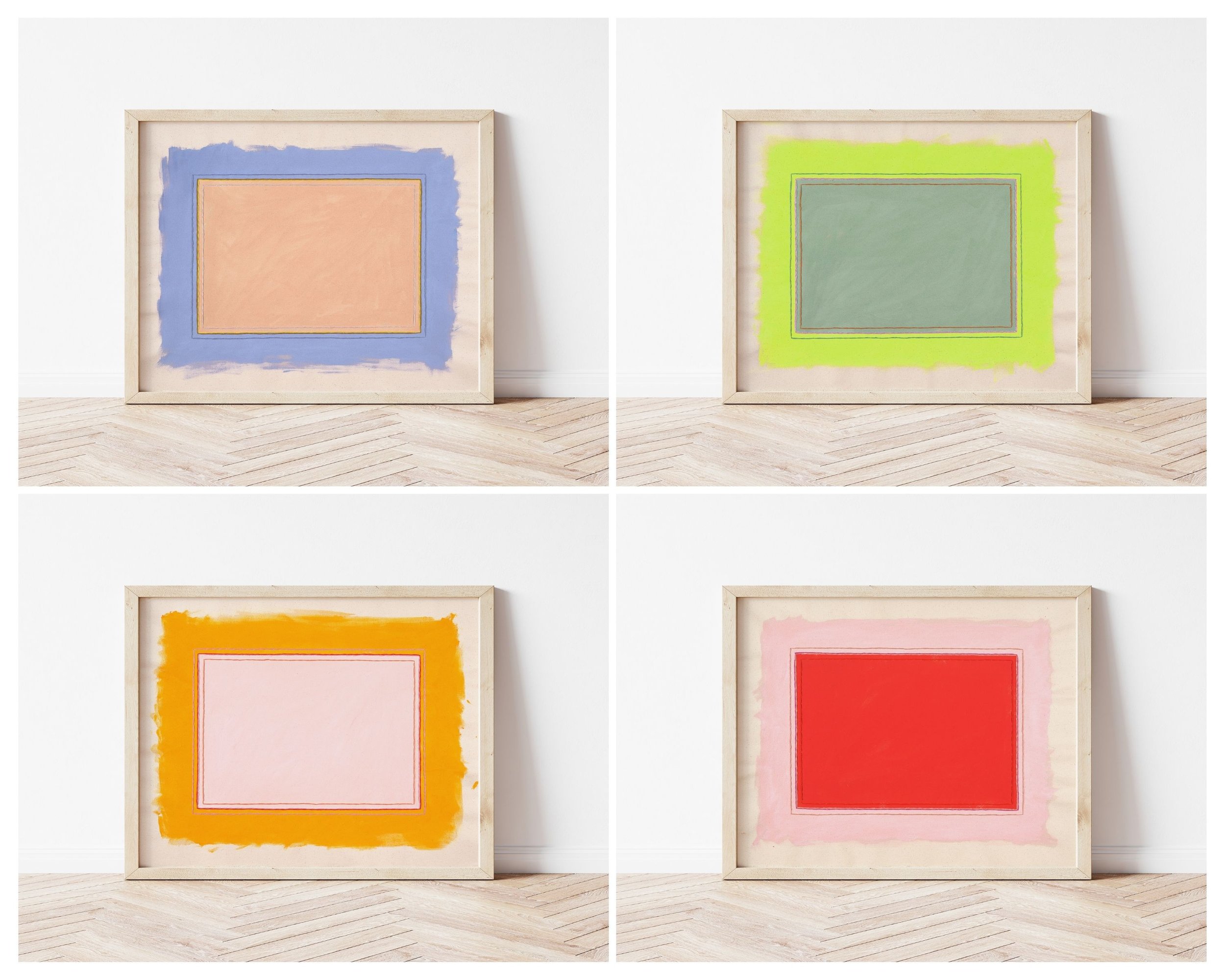A Minimalist Studio (or How Not To Hoard Art Supplies)
Going Minimal
Last weekend I took some much needed time to tidy up my home art studio and clear out anything I didn't really need. I keep the rest of my house pretty pared down to only things I use all the time and/or absolutely love and want to have around me. However, my art space always seems to go off in its own wild direction with piles of the strangest things like used cups from trendy coffee shops and scraps of embroidery thread and dried paint I think I will one day make into art.
While I've been obsessed with organization for most of my life, I am happily willing to admit that I am somewhat of a recovering hoarder. I mean there were no dead animals in my belongings at any time, but I used to hold on to everything, like EVERYTHING. A few years ago I jumped on the mnmlst bndwgn (anyone?) and discovered the incomparable joy of dropping off six (ok ten) giant trash bags filled with my stuff at Goodwill in one fell swoop. I’m not into being a minimalist for its own sake and I’m very content to own way more than 40 or 50 items, but clearing out the superfluous to get to the good stuff feels really effing awesome.
Why Artists Hoard
This is all well and good and sparkly for normal people stuff, but what about in the art studio? Having lived with other creative people I know I’m not alone in holding onto weird stuff in the name of artistic inspiration or a vague idea for a future project. When I lived with one of my best friends, an artistic goddess/set decorator, our joint prized possession was a set of colored plastic light filter samples we kept on our coffee table. And I know we each had our own stashes of supplies and goodies and maybe some trash that we loved and we knew would one day be just the right thing. Maybe some of that stuff never got used, but the stuff that did went into making really cool art that wouldn’t have been the same without those piled up treasures.
On the other hand, in life and in the studio we often hold onto things out of fear and scarcity. Two feelings that already spend enough time in our space. If you’re an artist you’re familiar with the many forms of fear involved in art making. And though you may not have thought about it this way before, scarcity can be a huge hindrance too. If we think we’re going to waste or run out of something, it’s hard to feel free to use it. It’s scary enough to put the first brushstroke down on a white canvas or pristine sheet of paper, but thinking about how much that Arches pad cost or how many hours you spent constructing that giant canvas can hold you back even more.
What To Keep
You can’t have your art supplies and make stuff with them too. If it’s a rare find and you honestly think you'll use it at some point, like a vintage family photograph that would be impossible to recreate and you have an itch to use in your work, I say keep it. Or if you don't think you'll use the photograph, but looking at it feels really good and that good feeling flows into your other work, still keep it. In the feng shui/organization world it's not really cool to keep things for the "what if I need it" reason (because that's fear and scarcity and fomo talking), but this isn't saying "what if." It's saying "I will." So if it’s something you want just because it seems unique or "what if" you might maybe find a use for it someday, then let it go.
I was once gifted a huge set of used Prismacolor markers. I held on to them for a while because they're expensive and fancy and cool. But after a couple months I remembered oh yeah I never use markers in my work and I probably never will. And if I do one day want to work with markers, I trust that they will be available at the art store and I respect my work enough to invest in the tools I need. So I sold the Prismacolors on eBay and moved on with my life.
As creative people, our job is to get new ideas, thoughts, and beauty out into the world, even if indirectly. The markers sitting in my drawer were doing nothing, but I can hope that whoever I sold them to is now using them to send new ideas, thoughts, and beauty into the world.
Ok tools and materials are not so difficult to prioritize, but let's talk about the task of applying minimalism to sketches and art projects themselves. There's definitely a pretty big pile of my artwork stashed at my parents' house, but I did go through the multiple-decades' worth of creations and ruthlessly toss out anything that didn't matter to me or I didn't like or I didn't have a strong memory tied to. I used to be obsessed with saving things for posterity, which I still think is important, but I want to live my life in the present and not in that fearful "what if" I want to look at this in twenty years state of mind. Now I try only to keep finished work that's aligned with my style/tone/message or sketches and studies that really inspire me or things I made as a kid that feel significant.
The biggest motivator for me in getting rid of artwork that no longer holds meaning for me, is that it makes physical and mental space for even better things. When my studio is full of stuff I'm not entirely proud of it's just blocking the better stuff from coming in. But I don't throw away finished artwork. I often donate it, knowing that it might not be exactly what I'm going for, but it's still worthy of a viewer and might make someone else really happy. I love the thought that maybe someone has one of my old watercolors hanging in their home right now and I'll never know it.
Actually Use The Stuff You Keep
The key to getting over those humps of fear and scarcity is to use your stuff and allow more to show up. You have to have some faith that if you cover that big canvas in the last little bit of your favorite impossible-to-find paint there will be more canvases and even better paint coming your way. If you use that perfect vintage photograph in a collage, another great photo will fall into your lap. If you’re really good at finding those rare gems to begin with, then you can rely on that talent and rest assured you’ll find more.
Plus, as with my markers, if our goal is to make things, keeping a pile of stuff we might one day use is not serving that goal. If you decide to keep something, don't let it sit for too long. Next to me right now are two lovely clean canvases still in their plastic packaging in the shopping bag they came home in months ago. I know I’m not making art by letting them sit there (I mean I guess I could say I’ve made an installation). I’m scared to put paint on them and mess them up, knowing it might take five crappy paintings to get a brilliant one. But how will I ever make that lone brilliant one if they keep sitting there? In theory I get it - you gotta crack a few eggs to make an omelette - but I'm pretty sure those canvases will still be sitting in the bag next month. Eventually, I’ll take my own advice.
Making the right amount of mess
Here's the magic question - how do I keep the clarity and focus that comes from working in a minimalist space while giving myself the freedom to collect inspiring things and make big crazy colorful messes? The answer is I give up control for a bit, let the mess make itself, then ideally check in every few weeks to clear out anything unnecessary, kind of like letting a tree grow wild then pruning it.
In a New York Times Op-Ed Kathleen D. Vohs shares her research on messiness which found that people put the same amount of effort into their work whether their space is neat or messy, but that their ideas are much more creative and innovative in the messy spaces. As she says,
"...clean spaces might be too conventional to let inspiration flow."
But I think there's a happy medium between sterile neatness and utter chaos. A space that's already a total mess can be stifling. I know from my years as a babysitter that babies love starting out in neat, organized play spaces because they get joy and stimulation from grabbing the toys and books off their shelves and scattering them around as they please. The same is true for my artist self. When my studio or art table reaches critical mass my desire to work flatlines. I don’t know where to begin, my palettes are covered in long-dried paint, my brushes are hiding all over the place, and everything else is buried under paper and canvas. None of this is helping me get to work.
When it’s all tidied up, supplies cleaned, I feel ready to dig in and create something great. Making a brand new mess and disorganizing the whole set up starts to feel really good. When I’m in the flow of making art the last thing I’m worried about is putting the paint tubes back in their color order.
Your first step: Find three things in your art or craft space that you can get rid of today.
Explore EKS Art






